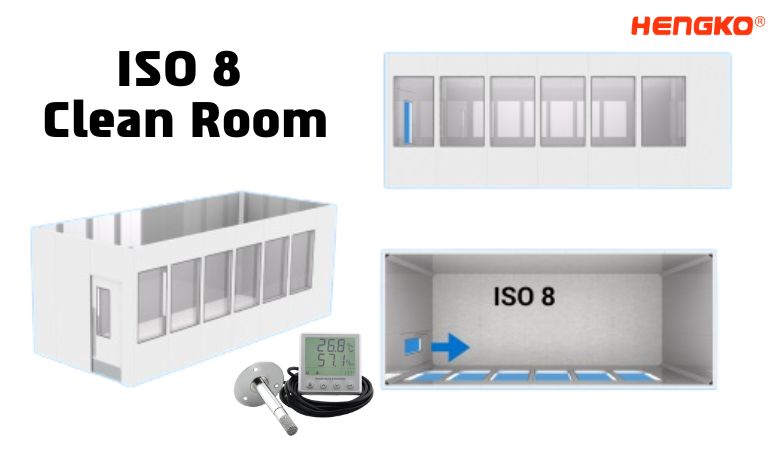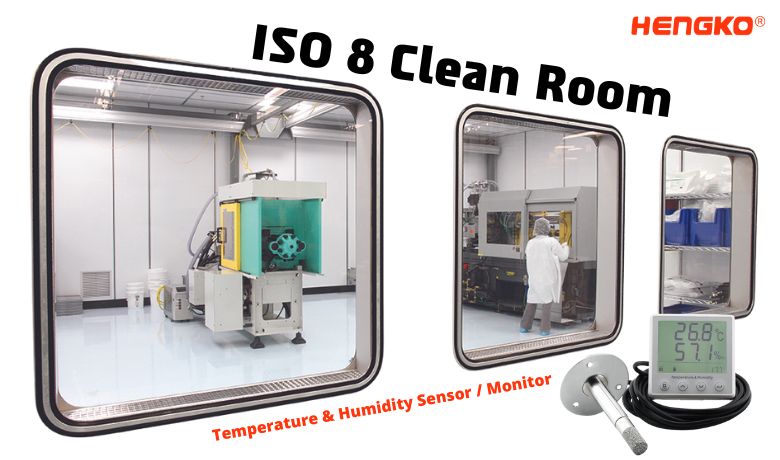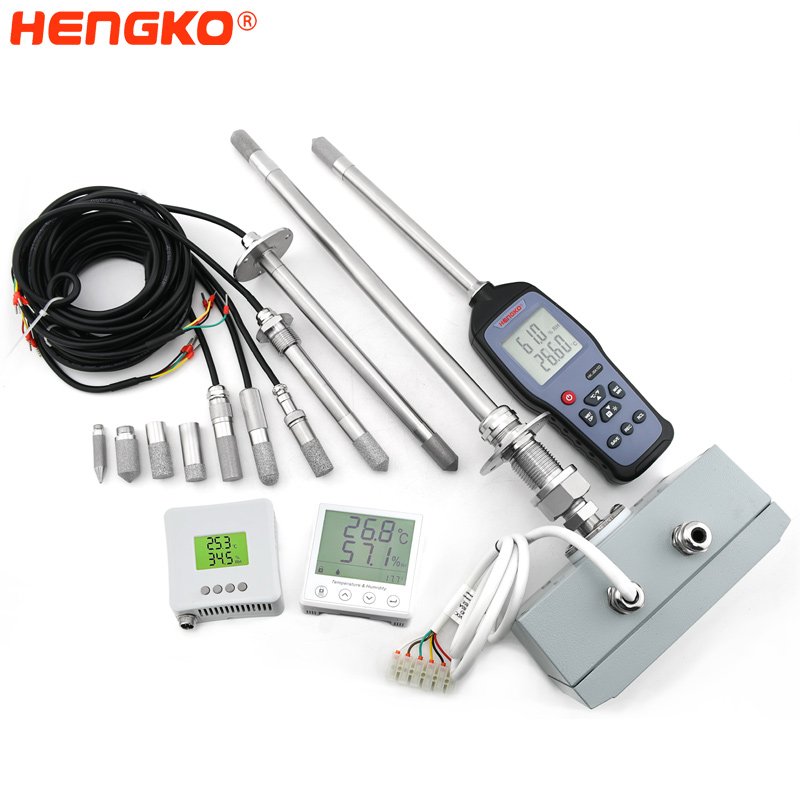
Types of Types of ISO 8 Clean Room
ISO 8 Clean Rooms can be categorized based on their application and the specific industry they serve. Here are some common types:
* Pharmaceutical ISO 8 Clean Rooms:
These are used in the manufacturing and packaging of pharmaceutical products. They ensure that the products are not contaminated with particulates, microbes, or any other contaminants that could affect their quality and safety.
* Electronics ISO 8 Clean Rooms:
These are utilized in the manufacturing of electronic components such as semiconductors and microchips. The clean rooms prevent contamination that could affect the performance and reliability of the electronic devices.
* Aerospace ISO 8 Clean Rooms:
These are used in the manufacturing and assembling of aerospace components. Contamination control is crucial in this industry as even a small amount of particulate or microbial contamination can lead to failures in aerospace components.
* Food and Beverage ISO 8 Clean Rooms:
These clean rooms are used in the production and packaging of food and beverage products, where maintaining a contamination-free environment is crucial to ensure product safety and quality.
* Medical Device ISO 8 Clean Rooms:
These are used in the manufacturing and packaging of medical devices. They ensure that the devices are free from contamination and safe for use in medical procedures.
* Research and Development ISO 8 Clean Rooms:
These are used in scientific research where a controlled environment is required to conduct experiments and tests accurately.
Each of these clean rooms must comply with the ISO 8 cleanliness standards, which include specific requirements for air cleanliness, particulate counts, temperature, and humidity. The design and operation of these clean rooms will vary depending on the specific needs of the industry and application.
Understanding the Essentials of ISO 14644-1 Classification
and Requirements for ISO 8 Clean Rooms in Various Industries
ISO 14644-1 classification clean room is a room or enclosed environment in which it is essential to keep the particle count low. These particles are dust, airborne microorganisms, aerosol particles, and chemical vapors. In addition to particle count, a clean room can usually control many other parameters, such as pressure, temperature, humidity, gas concentration, etc.
ISO 14644-1 Clean room are classified from ISO 1 to ISO 9. Each clean room class represents the maximum particle concentration per cubic meter or cubic foot of air.ISO 8 is the second lowest clean room classification. Designing clean rooms requires consideration of additional regulatory standards and requirements depending on the industry and application. However, for ISO 8 clean rooms, there are several general requirements and environmental parameters to consider. For ISO 8 clean rooms, these include HEPA filtration, air changes per hour (ACH), air pressure, temperature and humidity, number of people working in the space, static controls, lighting, noise levels, etc.

Clean rooms are available for a wide variety of industries and applications. Some of the most common ISO 8 clean rooms include medical device manufacturing, pharmaceutical manufacturing, compounding, semiconductor manufacturing, electronics manufacturing, etc.
Clean rooms typically have environmental monitoring systems that can collect, analyze, and notify detailed clean room environmental data. Especially for manufacturing Spaces, cleanroom monitoring aims to assess the potential contamination risk of products and maintain compliance with regulatory standards. The system can collect real-time data from HENGKO indoor clean room temperature and humidity sensors. HENGKO temperature and humidity transmitter can effectively and accurately measure the temperature and humidity numerical in a clean room, providing accurate and reliable data for the system. Help the manager to effectively monitor the indoor temperature and humidity environment to ensure that the clean room is in reasonable and appropriate environmental conditions.
Some people may ask, what is the difference between ISO 7 and ISO 8? The two main differences between ISO 7 and ISO 8 clean rooms are particle counting and ACH requirements, which make them stand out for different applications. An ISO 7 clean room must have 352,000 particles ≥ 0.5 microns/m3 and 60 ACH/hour, while ISO 8 is 3,520,000 particles and 20 ACH.
In conclusion, clean rooms are essential for spaces where cleanliness and sterility are critical, and ISO 8 clean rooms are typically 5-10 times cleaner than a typical office environment. Specifically, in medical device and pharmaceutical manufacturing, clean rooms, product safety, and quality are crucial. If too many particles enter the space, raw materials, manufacturing processes, and finished products will be affected. Therefore, clean rooms are essential in some industrial manufacturing areas that require precision machining.
FAQ :
1. What is ISO 8 Classification and How Does it Affect Clean Rooms?
ISO 8 Classification is part of the ISO 14644-1 standards, which dictate the cleanliness and particulate counts required for controlled environments such as clean rooms. For a clean room to meet ISO 8 standards, it must have a maximum allowable particle count per cubic meter, with specific limits set for particles of different sizes. This classification is essential in industries such as pharmaceuticals, aerospace, and electronics, where even small amounts of contamination can have significant impacts on product quality and safety.
2. Why is Clean Room Monitoring Important for Maintaining ISO 8 Standards?
Clean room monitoring is a critical aspect of maintaining ISO 8 standards because it ensures that the clean room environment consistently meets the required cleanliness levels. This involves continuous measurement and control of factors such as temperature, humidity, and particulate contamination. Clean room monitoring is essential to prevent contamination and maintain product quality, ultimately protecting both consumers and manufacturers.
3. What are the Key Requirements for an ISO 8 Clean Room?
The key requirements for an ISO 8 clean room include specific limits on air cleanliness and particle counts, as well as requirements for temperature and humidity control. These requirements are outlined in the ISO 14644-1 standard and must be strictly adhered to in order to maintain the ISO 8 classification. Proper clean room design, ventilation, and regular maintenance are also critical to meet these requirements.
4. How Do ISO 8 Clean Room Particle Counts Affect Product Quality?
ISO 8 clean room particle counts are a crucial factor in determining product quality, especially in industries where even small amounts of contamination can have significant impacts. A high particle count can result in product defects, recalls, and damage to a company's reputation. Regular monitoring and control of particle counts are essential to prevent contamination and ensure product quality.
5. What Are the Specific Temperature and Humidity Requirements for ISO 8 Clean Rooms?
While the ISO 14644-1 standard does not specify exact temperature and humidity requirements for ISO 8 clean rooms, these factors must be carefully controlled to maintain the required cleanliness levels. Temperature and humidity can affect the behavior of particles in the air and influence the risk of contamination. The specific requirements will vary depending on the industry and application.
6. How Does an Environmental Monitoring System Contribute to Maintaining ISO 8 Clean Room Standards?
An environmental monitoring system plays a critical role in maintaining ISO 8 clean room standards by continuously measuring and recording cleanliness and environmental conditions. This system helps ensure compliance with relevant standards and regulations, provides valuable data for quality control, and supports continuous improvement of the clean room environment.
So if you also have ISO 8 Clean Room .it's better to install the temperature and humidity sensor or monitor to check the data, to Ensure your project is goes fine as your plan.
Have Any questions for the industry temperature and humidity sensor, like how to choose right industry humidity sensor ect, you are welcome to contact us by email ka@hengko.com
we will send back to you within 24-Hours.
Post time: Feb-24-2022






